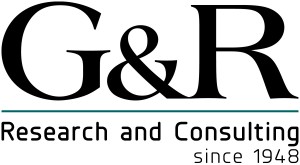 Claims Substantiation Research
Claims Substantiation Research
Research for Supporting or Challenging Claims
Advertising must be truthful, non-deceptive and not unfair. The claims that advertising makes, whether direct or implied, must have evidence to back them up. If they don’t they can be challenged. Survey research is often used to provide a basis for the claim or the challenge. When research is used to support or challenge advertising messages, it is likely to be subjected to rigorous scrutiny from adversaries and adjudicating bodies… much more so than when market research is used in its more typical role, as an aid for internal decision-making. Therefore, it is important that Claims Substantiation Research which supports key strategic directions be designed and executed to anticipate and withstand criticism well beyond what is expected of most research. However, this is not often achieved. Between January 2006 and June 2011, the National Advertising Division (NAD) of the Better Business Bureaus found that 71 percent of the consumer perception surveys introduced by parties to an NAD proceeding were unreliable and, therefore, had little or no impact on the final outcome of the case.
G&R’s reputation and leadership position in advertising research has made the company a recognized expert in Claims Substantiation Research. Our unmatched depth of expertise and care in designing, executing and defending claims research ensures that you receive maximum value for these important and high-visibility studies.
Core Capabilities
- Communication Tests – G&R offers a full range of proven communications research services, from forced exposure (where the respondent is directed to look at the stimulus itself before questioning begins) to in context (where the respondent is exposed to the stimulus in the context of how it is normally seen (on air/in magazine)). Communications tests are designed to measure what readers or viewers “take away” from a stimulus, that is, what messages are comprehended based on the stimulus. While there are a number of alternatives that may be considered, the three core designs that are most appropriate, because they are the most generally accepted, are: WebCheck, where respondents are recruited online to look at an electronic version of the test stimulus; FasTrac, where respondents are recruited in geographically dispersed malls to look at the actual test stimulus; and Impact, where respondents view stimulus in the context of their home.
- Brand Comparison Tests – Brand comparison tests are test conducted on a double-blind basis to evaluate preference between two or more brands. Taste tests and product trial tests are designed for use in parity or superiority claims in advertising. Brand preferences may be evaluated over a time period which may last anytime from minutes to weeks of brand usage. Based on specific needs, tests may be conducted in geographically dispersed malls for immediate reactions and preferences or tests may be conducted after respondents have used the test products for a pre-determined period of time at home.
Key Benefits and Features:
- Longstanding reputation for research integrity
- Standardized protocols enhance the acceptance of the research
- Highly experienced researchers steer you through potential pitfalls and minimize the opportunity for criticism by deciding organizations and adversarial research experts
- Careful control in the design and execution reduces the likelihood of bias and error
- Regular ongoing communication helps ensure the project is delivered on time and within budget
